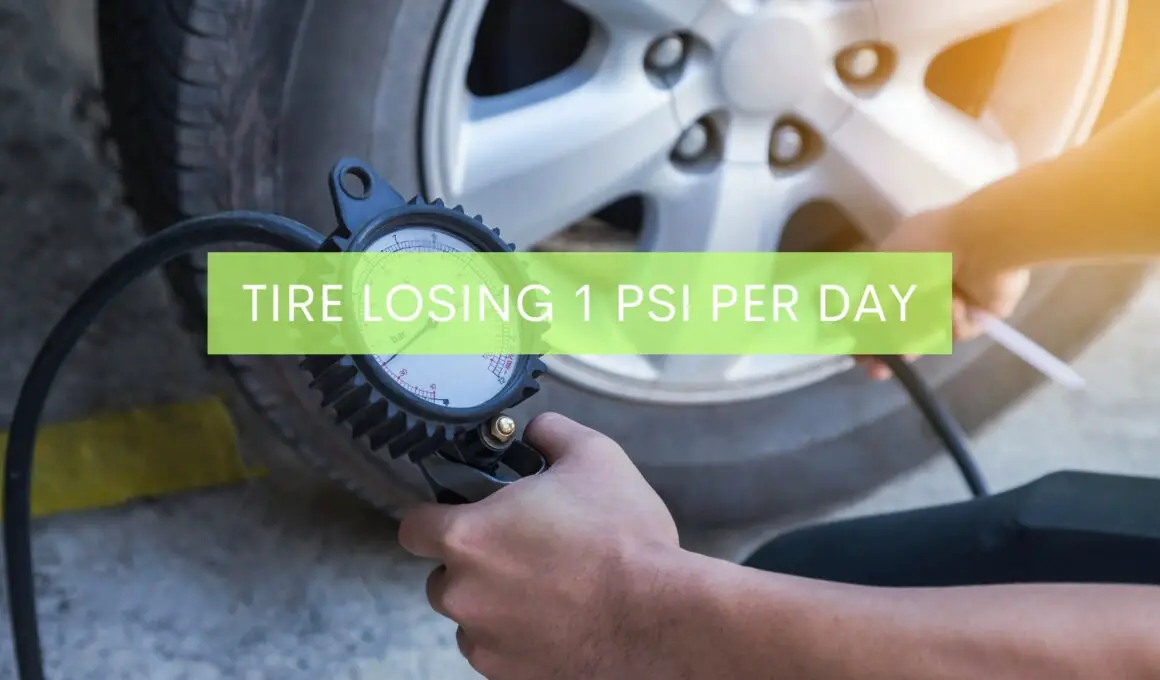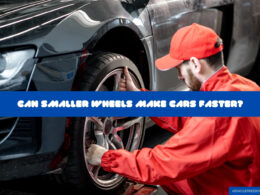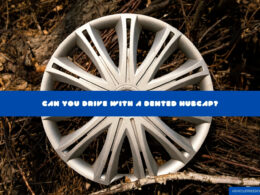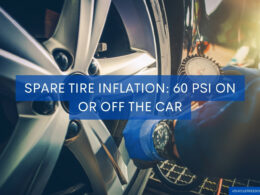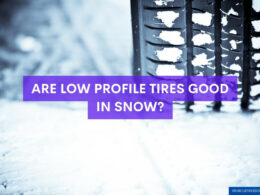In This Article Show
Having tire issues and looking like your tire is losing 1 PSI per day? On the surface, this issue may seem small, almost insignificant. But let me tell you, maintaining proper tire pressure is as essential as ensuring your engine runs smoothly.
It’s an aspect of car maintenance that often flies under the radar until you find yourself stuck on the side of the road with a flat tire.
Over my decade and a half in the field, I’ve developed a keen eye for diagnosing this problem and implementing effective fixes. But before discuss further on this matter, it’s crucial to understand what tire pressure is and why it’s vital for your car’s overall health and safety on the road.
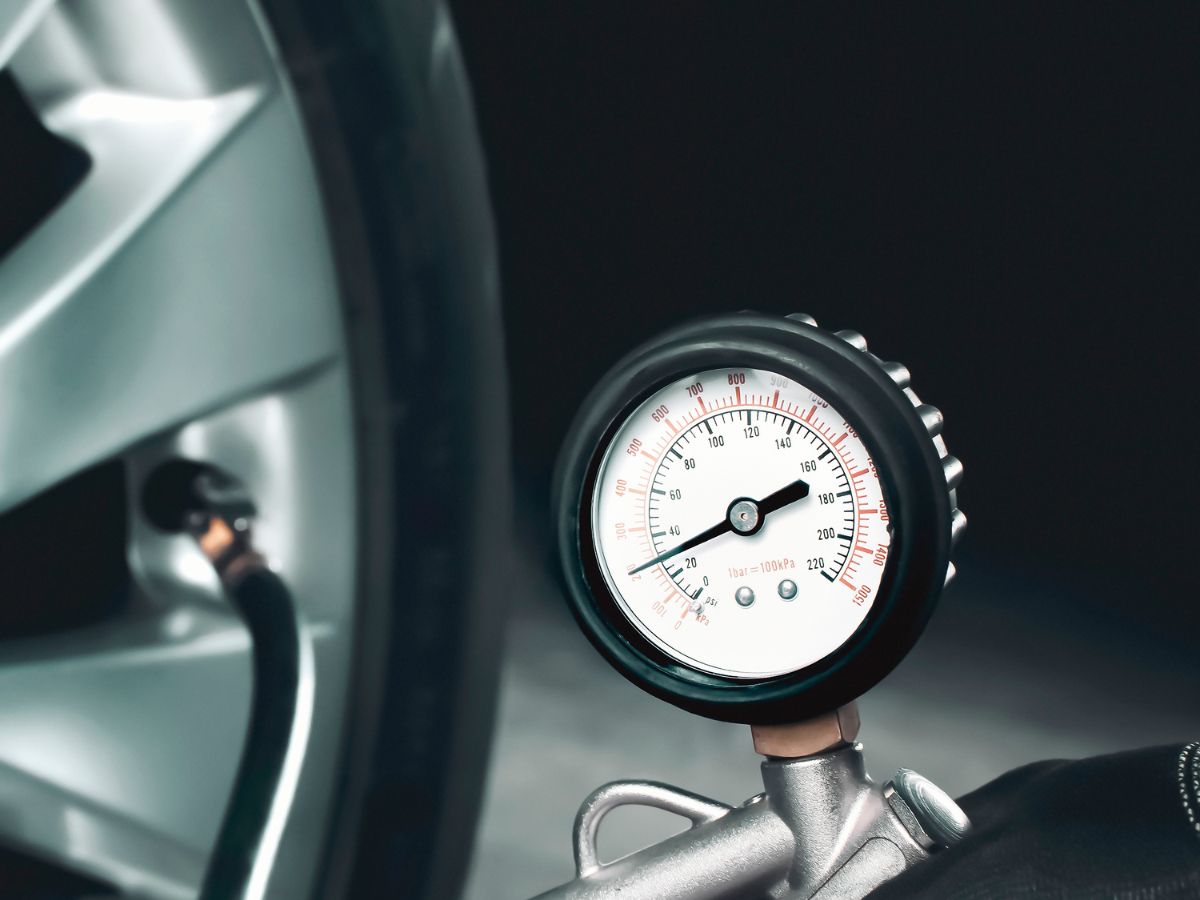
Understanding Tire Pressure: The Basics
If you’ve ever pumped air into your tires at a gas station, you’ve probably noticed the psi numbers on the air pump. But what exactly do they mean, and why are they so important? Let’s break it down.
PSI stands for pounds per square inch. It’s the unit of measure for tire pressure or the air inside your tires. This pressure supports the weight of your vehicle, helping your car to grip the road, improve fuel efficiency, and provide a smooth and safe ride.
The ideal tire pressure can vary based on factors such as the type of vehicle, the weight it’s carrying, and the tire’s design. However, most passenger cars will fall into the 30 to 35 psi range. Your vehicle’s specific tire pressure requirements are typically listed in the owner’s manual or a placard on the driver’s side door jamb.
It’s crucial to adhere to these specifications for optimal performance and safety.
As an experienced mechanic of over 15 years, I can’t stress enough how important maintaining the right tire pressure is. Too high, your tires may wear out more quickly, making your vehicle harder to handle. Too low, you’ll likely face decreased fuel economy, increased tire wear, and potential tire failure.
Causes of Tire Losing 1 PSI Per Day
Here are the most common reasons why your tire is losing 1 PSI per day or every now and then.
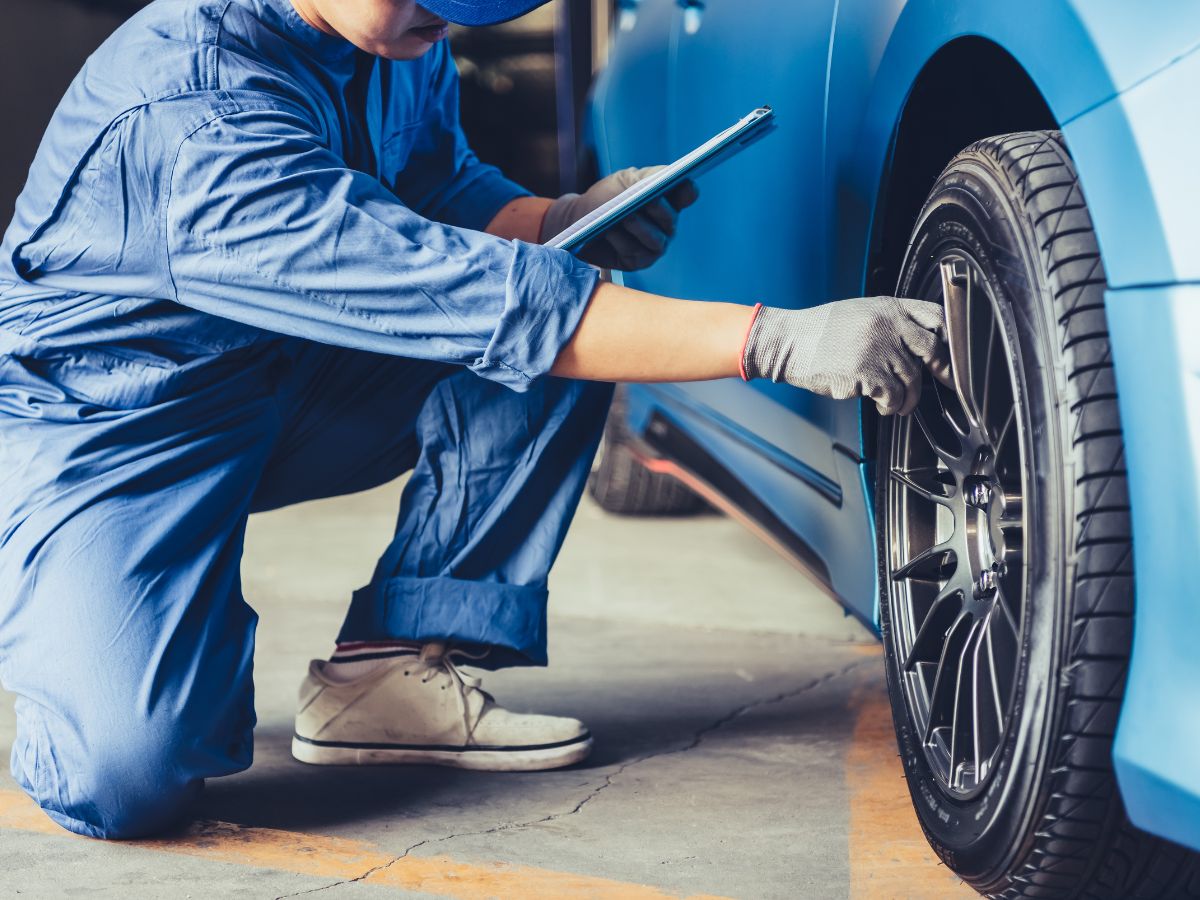
1. Natural Causes
- Temperature Fluctuations: Air, like all gases, expands when it’s hot and contracts when it’s cold. Therefore, if there’s a significant drop in temperature, it’s normal to see a decrease in tire pressure. For every drop of 10 degrees Fahrenheit, your tire pressure can decrease by about 1 psi. Conversely, if the temperature rises significantly, you may notice an increase in tire pressure.
- Tire “Breathing”: Tires aren’t entirely airtight; they “breathe” a little. It’s normal for tires to lose about 1 to 2 psi per month due to this permeation process.
2. Mechanical Issues
- Tire Punctures and Leaks: This is the most common reason tires lose pressure. A sharp object like a nail or a piece of glass can puncture your tire, causing it to lose air gradually.
- Faulty Valve Stems: A damaged or corroded valve stem can leak air. This is often overlooked as the cause for a tire losing pressure.
- Tire Bead Leaks: The bead is where the tire seals against the rim. If it’s not seated properly or if there’s any damage to the rim, it can cause a slow leak.
- Damaged Wheel (Rim): If the wheel itself is damaged—perhaps by hitting a deep pothole or curb—it can cause a leak.
Signs Your Tire is Losing Pressure
Spotting a tire that’s losing pressure can be straightforward if you know what signs to look for. Being proactive about noticing these signs can save you from more significant issues in the future.
1. Physical Signs
Physical signs are the most apparent indications of a tire losing pressure. Keep an eye out for the following:
- Flat or Squished Tire: A tire losing air will eventually look flat or squished. If you observe this, your tire pressure is significantly low and needs immediate attention.
- Uneven Tire Wear: When a tire is underinflated, the sides of the tire will wear out faster than the center. Over time, you might notice an uneven wear pattern on your tires.
- Vehicle Pulls to One Side: If you’re driving and your vehicle seems to pull to one side, it’s often a sign that one tire has less pressure than the others.
2. Use of Tire Pressure Monitoring System (TPMS)
Most modern vehicles come equipped with a TPMS. This system monitors the pressure in your tires and will alert you with a warning light on your dashboard when the pressure drops below a certain level.
It’s a valuable tool, but remember, it typically only signals when the tire pressure is significantly low. Regular manual checks are still essential for optimal tire health.
While these signs can help you identify a problem, they’re just the first step. Once you’ve noticed your tire losing pressure, the next thing is to get to the root of the problem and address it.
How to Fix a Tire Losing 1 PSI Per Day
Finding your tire losing pressure daily can be a frustrating experience, but with some careful steps, this issue can be addressed effectively. Here are some DIY fixes and situations where professional help is recommended:
1. DIY Fixes
- Checking for Punctures and Patching: If you suspect a puncture, first visually inspect the tire for any sharp objects. If you can’t see anything, a simple trick is to mix a bit of dish soap with water and spray or brush it onto the tire. If there’s a puncture, you’ll see bubbles forming at the site of the leak. Depending on the size and location of the puncture, a tire repair kit can be used to patch it up.
- Replacing a Faulty Valve Stem: If you notice bubbles forming around the valve stem during your soap water test, it’s likely the culprit. Valve stems can be replaced with a few basic tools and a new stem, which are readily available at auto parts stores.
2. Professional Help
While some issues can be handled at home, others might require a professional touch:
- Tire Bead Leaks and Damaged Wheels: These problems are harder to fix at home. If you suspect a bead leak or wheel damage, it’s best to take your vehicle to a professional. They have the right tools and knowledge to rectify the problem effectively.
- Consistent Unexplained Pressure Loss: If you’re still losing 1 psi per day despite not finding any visible issues, a professional mechanic should take a look. There could be less apparent problems that need expert intervention.

3. Preventive Measures
Prevention, as they say, is better than cure. Here are a few preventive measures to keep in mind:
- Proper Tire Inflation: Always maintain the recommended tire pressure. Regular checks, ideally every month or before a long trip, can help prevent gradual pressure loss.
- Regular Tire Pressure Checks: Regular checks will help you spot any rapid loss of pressure, allowing you to take immediate action.
- Investing in Good Quality Tires: Quality tires are designed to handle stress better and usually come with robust warranties. They may cost more upfront but can save you money and stress in the long run.
Being vigilant about your tire pressure may seem like a small thing, but remember, it’s the little things that often make a big difference in the longevity and performance of your vehicle.
Conclusion
Maintaining proper tire pressure is a crucial aspect of car ownership that is often overlooked. Yet, something as seemingly minor as your tire losing one psi per day can lead to significant problems down the line, affecting your vehicle’s performance, fuel economy, and your safety on the road.
We’ve discussed the causes behind this issue, from natural temperature fluctuations to mechanical problems such as punctures, faulty valve stems, and bead leaks.
We’ve discussed how to spot the signs of a tire losing pressure and offered practical advice on fixing these problems, from DIY fixes to when to seek professional help.






